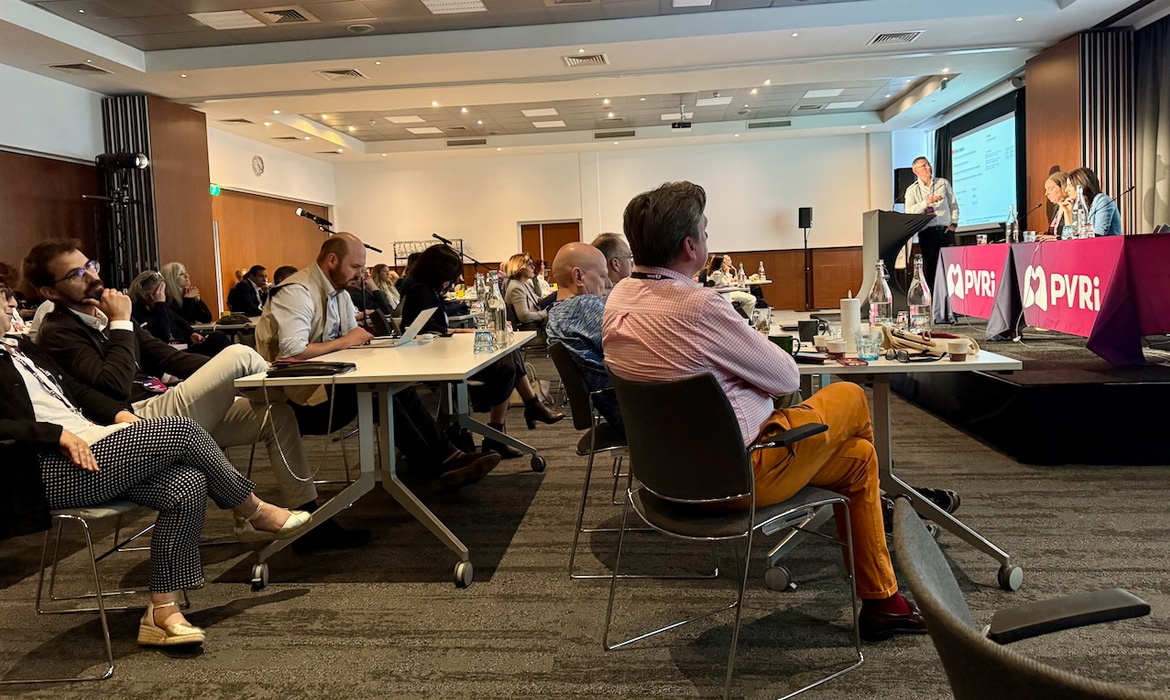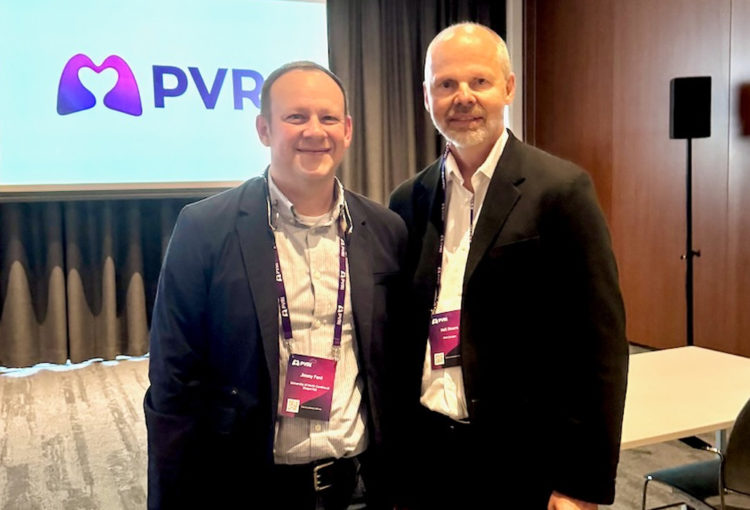PVRI Symposium Report 2025

I recently attended the PVRI Drug Discovery & Development Symposium 2025 in Amsterdam, held 16–17 June and regarded as the smaller of PVRI’s two flagship meetings; the next PVRI Congress will take place in Dublin, Ireland, from 28 January to 1 February 2026. The symposium brought together clinicians and researchers from the USA, Europe, and beyond, fostering meaningful collaboration in the critical field of drug discovery and development for pulmonary hypertension.
The atmosphere throughout was warm and collegial: it was clear that many attendees know each other well, creating an environment conducive to open exchange and future partnership. A particularly illustrative example of the commitment within the community came from two U.S.-based physicians who delivered their talks live from North America in the middle of their night. Their participation underscored a deep engagement – not only with pulmonary hypertension research, but also with the PVRI network itself.
These are genuinely exciting times in pulmonary hypertension. With sotatercept (Winrevair) now on the market – following FDA approval in March 2024 and EU approval in August 2024 – much of the discussion in the early part of the symposium focused on the drug’s efficacy. There was also considerable attention on how sotatercept should be positioned relative to existing therapies, drawing on conclusions from last year’s PH symposium; forthcoming ERS/ESC guidelines are expected to clarify treatment sequencing and combination strategies.
The arrival of sotatercept raises the prospect that we are entering a new, potentially disease-modifying era in PH. Its effects on pulmonary vascular resistance and rightventricular function, together with early signs of reverse remodelling, have fuelled optimism that therapy may soon extend beyond purely symptomatic management.
Professor Paul B. Yu (Massachusetts General Hospital / Harvard), whose laboratory work was instrumental in the development of sotatercept, introduced a single next-generation agent that targets the same activin-receptor pathway. Although the compound remains at an early investigational stage, it could prove even more effective than sotatercept, further supporting the PH community’s hope for truly disease-modifying therapies.
Professor Pilar Escribano Subias (Hospital Universitario 12 de Octubre, Madrid) summarised the phase 2 TORREY data on the inhaled kinase inhibitor seralutinib and noted that the phase 3 PROSERA study is now fully recruited, with topline results expected late this year. The phase 2 findings showed a significant reduction in pulmonary vascular resistance over 24 weeks and signs of reversed vascular remodelling – results that continue to attract interest within the PH community.
Another compelling session came from professor Zhi-Cheng Jing from the Guangdong province in China who presented research on PH related to spermine. Spermine is a natural substance found in the body and belongs to a small group of molecules known as polyamines. These molecules play a vital role in maintaining cell health, supporting cell growth, and ensuring proper cellular function. In patients with PH, spermine levels have been found to be elevated. The Chinese research team is developing a compound that has shown «robust therapeutic efficacy» in rat models. This presentation highlighted the increasingly global reach of PH research and the growing contributions from Asia. The professor expressed a desire to see future PVRI conferences hosted in China and added a light-hearted touch by tempting the audience with photos of local cuisine from the region where his lab is based.
In another interesting presentation, the so-called sex paradox in pulmonary hypertension was discussed. It has long been observed that females have a better survival rate than males after being diagnosed with PH, a trend seen consistently across all PH groups in registry data. However, the reasons behind this difference remain unclear. One hypothesis is that sex hormones play a role. For example, oestrogen appears to influence the expression of BMPR2 gene mutations and may also promote vasodilation. So while women may be more susceptible to developing PAH, they tend to have better survival outcomes. These findings suggest that sex hormones may be contributing factors, pointing toward possible sexspecific therapeutic targets in the future.
In another, somewhat related presentation, it was noted that Caucasian white women were overrepresented in clinical trials conducted in the U.S. between 2020 and 2024. For example, while African Americans make up nearly 14% of the U.S. population, they accounted for only about 4% of clinical trial participants during this period. Several potential strategies to address this imbalance were discussed. These included the use of community ambassadors to build trust and engagement, as well as targeted outreach through appropriate social media channels. Achieving more balanced representation in clinical trials is essential – not only to reduce health disparities and improve equity in research, but also to enhance recruitment and avoid potential regulatory challenges related to underrepresentation.
An additional spotlight fell on a small implantable device designed to restore pulmonaryartery compliance by rhythmically expanding and recoiling inside the vessel. Early feasibility data with the Aria pulmonary endovascular device demonstrated improvements not only in arterial compliance and right-ventricular coupling across multiple PH phenotypes, but also reductions in NT‑proBNP – suggesting an effect beyond pure hemodynamics.
Percutaneous arterial denervation (PADN) also featured prominently. This minimally invasive, catheter-based procedure uses focused ultrasound to disrupt sympathetic nerve fibres along the pulmonary artery. Notably, clinical studies have demonstrated PADN’s ability to reduce NT‑proBNP levels, in addition to improving exercise capacity and hemodynamic parameters – again indicating a broader impact than simple pressure reduction. Gradient Denervation Technologies’ system recently received FDA Breakthrough Device designation – an encouraging signal of regulatory interest.
Beyond therapy, a thought-provoking session by Dr. Frances Varian explored how to calculate and reduce the environmental footprint of PH research – a timely initiative as sustainability becomes a broader imperative.
Overall, the event conveyed a strong sense that the pipeline in PH is robust: from potential disease-modifying drugs to interventional devices and environmentally conscious research practices. PVRI continues to play a critical role by bringing together regulators, industry, academia, and clinicians from across the globe. I look forward to seeing how these collaborations and innovations unfold in the coming years.
Hall Skaara
Project Manager PHA Europe
Oslo, June 25th 2025





